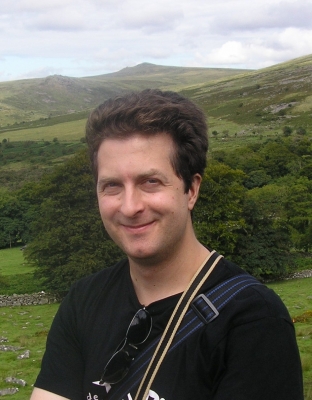Clearer Skies for Cloud Modeling
Published: 1 July 2015

This May, Cyril Morcrette was awarded the L F Richardson Prize by the Royal Meteorological Society for his work in evaluating cloud forecasts. Although weather and climate models often rely on different metrics to make accurate forecasts, Morcrette created a unified methodology that can be used to evaluate cloud predictions at both scales. Data provided by the ARM Climate Research Facility played a key role in his work.
Weather and climate researchers are often looking at very different things. Especially when it comes to clouds, climate modelers are interested in their reflectivity and how they affect long-term trends, but weather forecasters need to know exactly when and where it’s cloudy. Morcrette explains that “if you make an improvement to the way that clouds are represented, it’s possible to improve the predictions from the point of view of a weather forecaster, but make them worse for a climate modeler.”
In their paper, Morcrette and two other researchers argue that three measurements are enough to check for accuracy on both scales: how often there are clouds, the amount of clouds when they are present, and when the clouds are present. When only looking at average cloud cover, multiple errors could combine to cancel each other out, and make it seem like the model is right even though it isn’t. It’s also possible that models making almost-right predictions in many areas could see their smaller mistakes multiplied together to show terribly wrong averages, despite the individual predictions being almost right.
“For example, imagine the monthly mean cloud cover is 50%. Now in the real world, that could be because it is 50% cloudy, all day every day. But a model might predict 100% cloud for the first 15 days and then clear sky for the next 15 days. For a climate modeler, that could be judged to be a perfect prediction of monthly mean cloud cover, but clearly that is not a very good weather forecast. If the modeling system was changed and the model now predicted 55% cloud cover, all day every day, then a bias is introduced where there wasn’t one before. However, in terms of the forecast on a given day, few would argue that it is not a better forecast,” says Morcrette.
To check the models against reality, Morcrette’s group needed actual information of what happened. They chose to use data from three ARM sites, along with two locations from the European Cloudnet project, because of the length of their studies, their geographical spread, and their near-continuous data collection. The Darwin, Australia, facility in ARM’s now-closed Tropical Western Pacific site, a deployment of the ARM Mobile Facility in the Black Forest, Germany, and ARM’s Southern Great Plains site in Oklahoma all contributed data from four months in 2007.

“Getting hold of the ARM data was straightforward,” Morcrette says. “I intend to use it again in the future.”
Morcrette is a science manager in the atmospheric processes and parameterizations team at the Met Office, the United Kingdom meteorological agency. He was awarded the L F Richardson Prize this year for the paper Evaluation of two cloud parameterization schemes using ARM and Cloud-Net observations, published in the April 2012 issue of the Quarterly Journal of the Royal Meteorological Society. The prize is awarded annually to an early-career member who has published a meritorious paper in a Royal Meteorological Society journal during the last four years.
For more information on the paper, read the ARM Research Highlight.
# # #
The ARM Climate Research Facility is a national scientific user facility funded through the U.S. Department of Energy’s Office of Science. The ARM Facility is operated by nine Department of Energy national laboratories.
The ARM Climate Research Facility is a DOE Office of Science user facility. The ARM Facility is operated by nine DOE national laboratories, including .
Keep up with the Atmospheric Observer
Updates on ARM news, events, and opportunities delivered to your inbox
ARM User Profile
ARM welcomes users from all institutions and nations. A free ARM user account is needed to access ARM data.


















